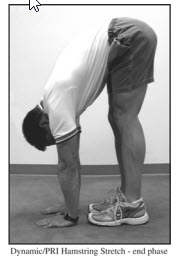
Time to start your Houston Marathon training program.
This brings up the rather controversial topic of stretching. There are those who advocate no stretching, those who stretch as a warm-up, those who stretch only when nursing an injury, those who recommend static stretching and those who simply never stretch because they are too focused on training their cardio-pulmonary system. This last group also often neglects all or most forms of cross-training to run more, more and even more miles. This is like putting a Ferrari motor in a Pinto chassis and wondering why you never win the Indianapolis 500.
The crux of this issue centers on the fact that being an athlete requires endurance, strength and flexibility all working in harmony. The exact balance of these skills varies according to the sport or activity for which you are training. For example, a sprinter and a marathoner have to balance endurance, strength and flexibility in a decidedly different manner. If a marathoner spends too much effort on strength training at the expense of endurance training the result is a slower marathon time. However, if a marathoner spends too much time on endurance and strength training at the expense of flexibility the result is a reduction in normal range of motion in a given joint. This often leads to an injury in said joint or in the joints above or below the inflexible joint due to compensatory changes.
Never stretch a cold muscle.
Stretching is not a warm-up and this often leads to injuries, no increase in flexibility or just wastes some of your precious training time. Muscles are like chewing gum. In the wrapper, gum is hard, brittle and not elastic. Place a piece of gum in your mouth and as it adapts to the movement of chewing, the increase in temperature and moisture it changes it shape, texture and elasticity. To properly warm-up your muscles pick an activity, which approximates your training session (rule of specificity). As you begin to slowly use your muscles, there is an increase in circulation, temperature and elasticity. After about 5 to 10 minutes of easy exercise (depending upon environmental temperature) you should begin the easy portion of your scheduled workout, and then proceed to the main set, followed by your cool down. Now is the time to work on your flexibility. If you are recovering from an injury or feel tightness in a given muscle then you must alter your training routine to address said area. Remember, you are only as fit as your weakest part.
Whenever possible always stretch according to the Principle of Reciprocal Inhabitation (PRI).
Simply stated, this means that you contract a muscle while you stretch the antagonist muscle. For an easy example, look at the triceps muscle. The most effective way to stretch the triceps is to completely shorten the biceps. This is done by extending the arm straight up overhead with the palm facing forward. Next, bend the arm at the elbow placing the palm on the back between the shoulder blades and contracting the biceps as tightly as possible. This contraction inhibits the triceps muscle, allowing it to lengthen. PRI allows you to stretch a muscle and strengthen its antagonist at the same time. This occurs because the body has a feedback loop that prohibits both muscles from effectively contracting at the same time. If this did not occur, the elbow would
never flex (bend) because the triceps is much stronger than the biceps.
Proprioceptive Neuromuscular Facilitation (PNF) technique should be used the in the remaining situations.
To easily stretch the quadriceps in a PNF manner, simply lie on your stomach, bend the right leg at the knee and bring the heel toward the right buttock. Next reach back with the right hand and grab the outside of the right ankle keeping the thumb facing down. Then brace the upper body on the left forearm, arch the back (pull the shoulders back while pushing the chest forward) and push the pubic bone down. While maintaining the above position, attempt to straighten the right leg and pull against the quadriceps with the right arm. This forces the right quadriceps to contract (attempt to shorten) while maintaining its length. This stretches the fibers because there is contraction without movement of the leg. There are occasions where both PRI and PNF stretching can and should be used in an alternating fashion. To add a PRI stretch to the above stretch just contract the hamstring while pulling the heel to the buttock. You can alternate between the PNF and the PRI stretch for the best result.
Dynamic stretching which involves PRI stretching is the most effective way to stretch.
This is not always possible, but I will provide a great example (courtesy of Robert Boustany) of how to stretch the hamstrings while contracting the quadriceps in a whole body movement using body weight for resistance. Stand tall with your feet parallel and about two inches apart. Bend forward at the waist and bend your knees squatting down as low as possible while still keeping your heels on the floor. Place your palms flat on the floor in front of you. From here, maintain the position of your feet and palms, straightening the legs by contracting the quadriceps and stretching the hamstrings. When you reach a point where your hands start to come off the ground or your hamstrings feel tight stop straightening your legs and squat back down. Repeat this process 10 to 12 times. Pay close attention to how bent your legs are when you feel the hamstrings tighten in the beginning versus at the end. You should see significant difference in your hamstring flexibility after your first set of 12 repetitions. You can do 3 sets of 12 repetitions every other day.


Remember, always warm-up, never bounce, hold your breath or stretch past the point of pleasant tension. I generally recommend holding any given stretch for 10 to 15 breaths. This stops you from holding your breath and gives you a mechanism for time. Since normal respiration is 18 to 22 breaths per minute, this means you are stretching for 30 to 50 seconds depending on how hard you are working/breathing. Incorporating stretching into your daily routine can help reduces injuries, increase your flexibility and get you across the finish line in January.
As previously printed in Houston Sports News
